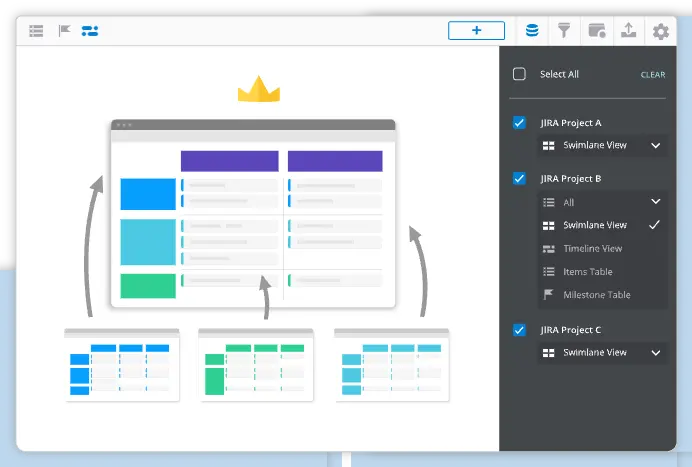Demystifying IT change management: Best practices and strategies
You’ve heard it before: “Change is good.” It’s hardly a revolutionary statement. Change can improve competitiveness, motivate employees, and drive customer value. But not all change is created equal.
Change for the sake of change can quickly devolve into chaos, especially in the information technology field, where new technologies are a dime a dozen. Adopting or updating computer equipment and software is expensive and risky. Organizations must ensure change is in their best interest.
Many businesses implement an IT change management process that evaluates requests and weighs risks versus benefits to avoid costly mistakes. This process ensures internal system updates protect organizational integrity and align with strategic goals and objectives.
What is IT change management?
According to the (ITIL) framework, the IT change management process is a tech protocol that ensures “standardized methods and procedures are used for efficient and prompt handling of all changes, in order to minimize the impact of change-related incidents upon service quality, and consequently improve the day-to-day operations of the organization.”
processes benefit all sorts of transitions, including . IT change management, sometimes called change enablement, is closely tied to (ITSM). The primary difference is change management focuses on organizational impacts, while ITSM concentrates on customer experience.
Change management supports IT teams as they perform the following processes:
Update IT infrastructure and code
Roll out new services
Resolve issues or outages
Meet regulatory standards
At the organizational level, the process has the following effects:
Breaks down silos between IT and other departments
Provides context and transparency to IT management practices
Minimizes risks
Avoids approval bottlenecks
Why is IT change management important?
Companies constantly seek a competitive edge, often through technological innovation. IT teams must maintain reliable service while adapting to changing business needs through regular infrastructure, systems, and software updates.
A change management solution protects organizations from costly outages caused by security breaches, equipment failure, or increased infrastructure demand. In financial terms, downtime can cost in lost revenue and productivity.
Other benefits of change management include:
Prioritizes updates to optimize resource deployment
Empowers decision-makers with relevant data and historical information
Bases approvals on DevOps and IT team input
Includes change testing and rollback protocols to avoid incidents
Streamlines approval process to speed up value delivery
Enables your team to stay compliant with new laws and industry standards
Keeps your team in step with company-wide policy changes
Helps your team evolve alongside tech advancements
IT change management terms
Change management incorporates its fair share of proprietary terms and acronyms. Here are the most common:
IT Infrastructure Library (ITIL): The standardized IT service lifecycle framework, ITIL improves the reliability and efficiency of service selection, delivery, management, and maintenance.
Request for change (RFC): Any change request must come as an RFC. The form or template includes all the necessary information to evaluate and approve a change.
Change Advisory Board (CAB): An organization’s change advisory board comprises stakeholders and experts responsible for assessing and approving RFCs. Some companies have an Emergency Change Advisory Board (ECAB)—a stripped-down CAB that can quickly convene to address emergency change requests.
IT change management process
Before implementing a change, you need to:
Consider how the change will impact your systems, processes, resources, and stakeholders
Get approval from stakeholders
Establish timelines and procedures for implementation
Deploy new software and hardware if necessary
Update your team’s processes for the duration of the transition
A clear change management protocol is essential to IT productivity. It ensures every job flows smoothly from submission and assessment to approval and implementation while minimizing potential bottlenecks. Here is a general outline of the process:
1. Generation
For every change or update, the IT team creates an RFC containing data outlining the following:
Risks
Rewards
Affected systems
Recommendations
Expected implementation
2. Evaluation
Approvers within IT validate the accuracy and necessity of the change before submitting the RFC to the CAB.
3. Planning
Once IT finalizes the RFC, they create an implementation plan. Documentation includes these elements:
Impact assessment
Rollout plans
Roles and responsibilities
Downtime schedule
4. Approval
Upon receipt of the RFC, the CAB assesses the project’s potential risks and rewards. They either recommend approval from the change manager, reject the request, or return the RFC to IT for further information.
5. Implementation
With RFC approval, IT teams can implement the change by scheduling, assigning, and delegating related tasks. Keep stakeholders apprised of upcoming changes and explain the benefits, and make sure ot track and document the implementation to address any issues that may come up.
6. Testing
Once work is complete, the project team conducts a post-implementation review to assess the change’s efficacy and whether there was any unexpected fallout. IT must address issues before closure.
7. Closure
This step documents whether the improvement is successful, failed, or incomplete. By recording and analyzing the outcome, IT avoids duplicated effort and documents valuable lessons to inform future endeavors.
Best practices for IT change management
The change process can be challenging, but careful will set you up for success. The following best practices will help you establish a robust change management protocol:
Create specific processes: Establish management processes for each change category based on priority and other requirements to ensure optimization.
Consider risk and regulations: Avoid potential issues by understanding and incorporating threats and other considerations into the planning and evaluation phases.
Delegate: Assign roles and responsibilities to members of the CAB so the change manager can focus on big-picture goals and strategies.
Analyze risk and impact: Consider potential threats and consequences during the approval process and organize contingency or backout plans.
Automate: Change management can be rigorous. Streamline the workflow with automation wherever possible.
Create templates: Create reusable RFC templates for each change category to save time, simplify the process, and ensure the IT team’s submission includes all relevant information.
Communicate: Inform stakeholders about change schedules to avoid internal issues and prevent negative impacts on public-facing services.
Track effectiveness: Use KPIs and metrics to quantify change management success. With concrete data, evidence will support decisions to improve the process.
Tools you need for effective change management
Time tracking: Your team can use Timesheets by Tempo to log time throughout the change. This will allow you to see how much time is being spent on various initiatives throughout the transition.
Resource planning: Use Tempo Planner to allocate resources to various projects and tasks. You can see which team members are available to take on tasks and assign resources to help them get the job done.
Budget management: With Tempo Budgets, you can easily stay on top of your budget. Keep track of expenses related to change management and ensure you don’t spend too much.
Cost tracking: See how much you’re really spending on the change with Cost Tracker. You can break down your costs by categories to see exactly where your money is going.
IT change management with Tempo
Change is inevitable – disruption doesn’t have to be. When your IT team makes changes to infrastructure, systems, processes, and services, there are ways to keep things running smoothly. Ultimately, these changes are intended to improve the way your IT department works, and to benefit both employees and customers. Using the right tools during the transition can minimize disruption and maximize the impact of the updates.
Fortunately, Tempo provides all the necessary tools to create a to oversee every phase of the change management process.
aggregates work across multiple IT teams, projects, or service queues into a single dashboard. This boosts visibility, facilitates communication, and creates a single source of truth. ensures groups have the materials and staff to complete essential tasks. allows groups to share service management, agile, or project dashboards to track real-time metrics and assess risks.
No matter your company’s needs, Tempo’s suite of applications makes organizational change management a breeze.
Try Tempo's ITSM solutions









